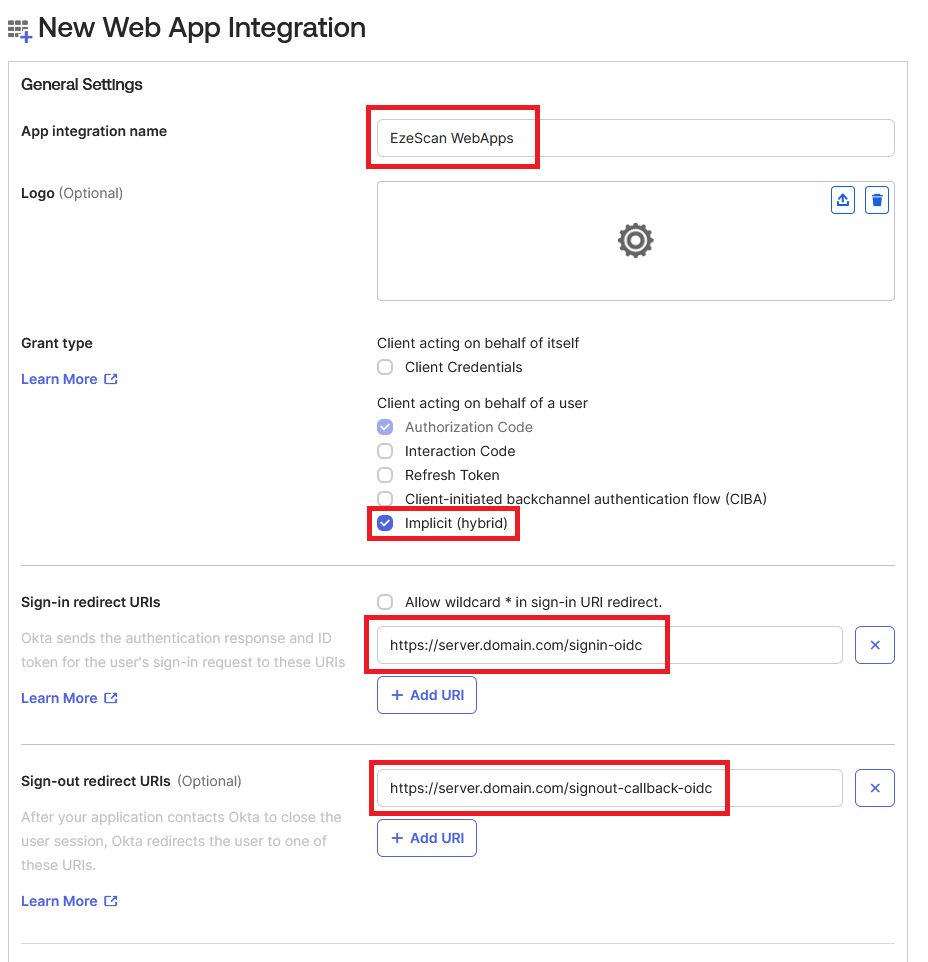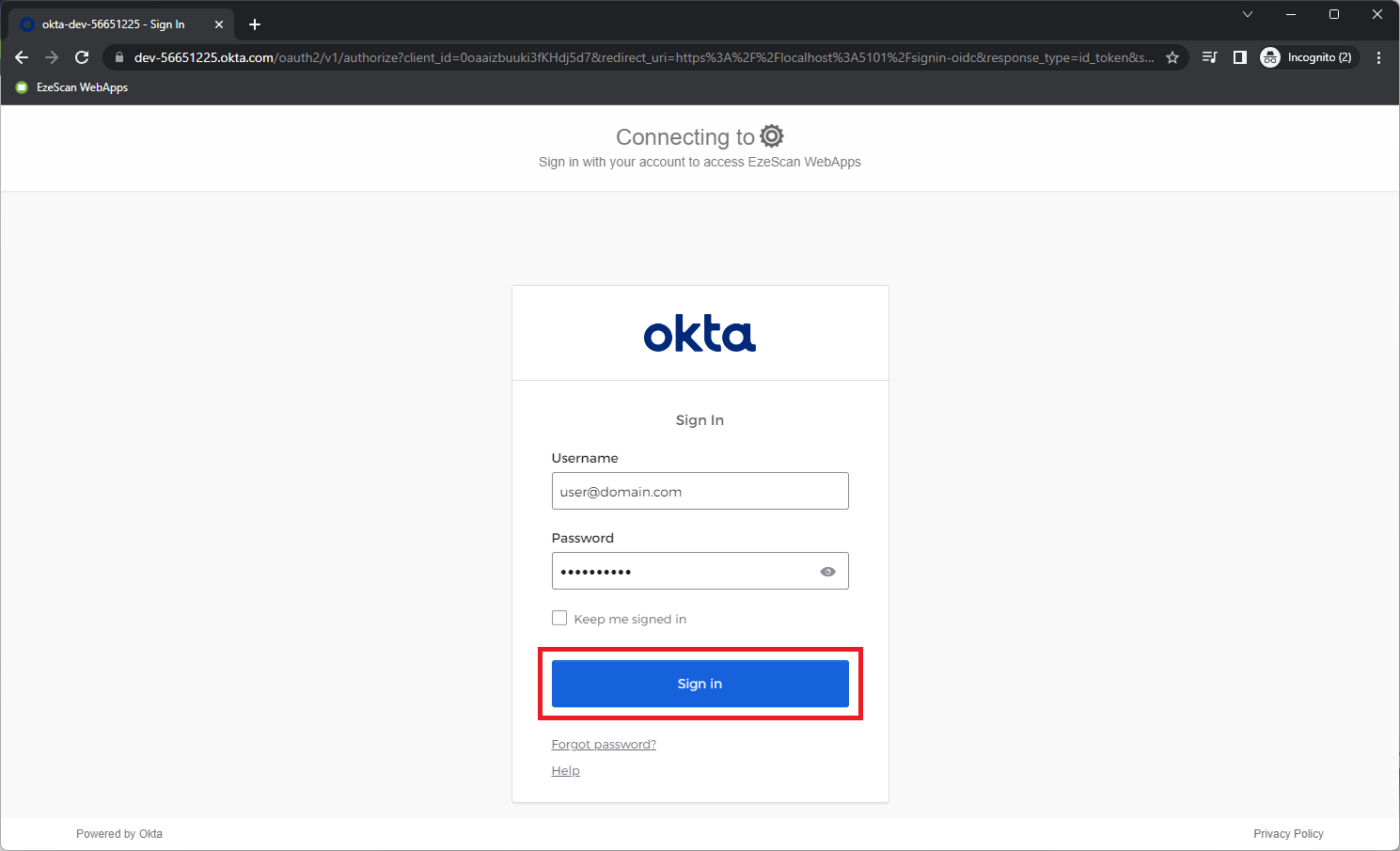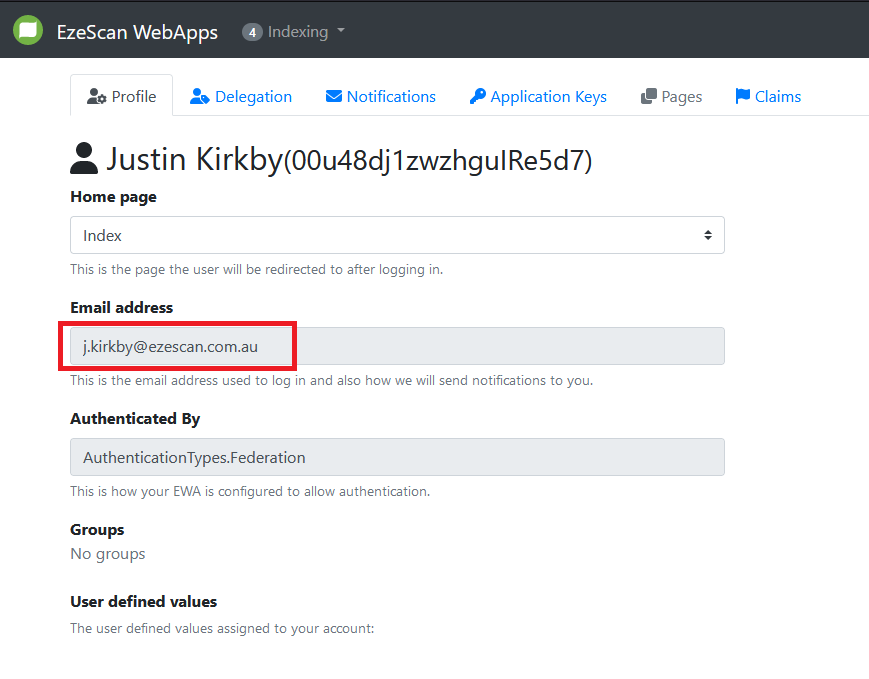Authenticating with OKTA via OpenID Connect
OKTA Configuration
| 1 | Click the create App Integration button.  |
| 2 | Select the following options and then click Next.  |
| 3 | Enter the following information and then click the Save button. App Integration Name: Grant Type: Sign-in redirect URIs: Sign-out redirect URIs: Controlled Access:  |
| 4 | After the application has been created click the copy button next to the Client ID and record this down for later use.  |
EzeScan WebApps Configuration
| 1 | Locate the appsettings.json file found in the root directory of your EzeScan WebApps installation directory. |
| 2 | Edit the appsettings.json file using your favorite text editor and modify the Authentication section to contain the following:
JS
You will need to substitute the value of "ClientId" with the "Client Id" from your application setup in OKTA. You will need to substitute “dev-56650000.okta.com” with your OKTA domain. |
| 3 | Save the appsettings.json file. |
| 4 | Restart the IIS App Pool that runs EzeScan WebApps. |
| 5 | Navigate to your EzeScan WebApps site and click the Login button.  |
| 6 | Try logging in as a valid OKTA user.  |
| 7 | After successfully logging in you will be redirected back to EzeScan WebApps and in the top right hand corner you should see your display name.  |
| 8 | Navigate to the user settings by clicking on the username in the top right and clicking the Settings option in the drop down.  |
| 9 | Confirm that the users email address is displaying correctly.  |
